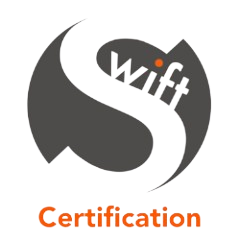ISO 9001 remains one of the most widely adopted standards in the UK, especially among small and medium-sized enterprises (SMEs) seeking to improve operational efficiency, build customer trust, and access new contract opportunities. Yet, let’s be honest: ISO 9001 can feel like a mountain when you’re a small or medium-sized business, pursuing it between juggling clients, chasing invoices, and keeping the lights on. It’s easy to miss the potholes on the path to certification – often due to limited resources, unclear expectations, or misaligned priorities.
As a certification body, we regularly see the same risks recurring across sectors, so we believe it’s important to highlight these challenges and share practical solutions.
1. Lack of Top Management Commitment
The Risk: Without visible leadership buy-in, quality initiatives often lose momentum. Staff may see ISO 9001 as a compliance exercise rather than a strategic tool, and before you know it, your quality system’s gathering dust in a shared drive no one opens.
The Solution: Senior leaders should be actively involved from the outset. This means setting clear quality objectives, allocating resources, and regularly reviewing progress. Internal workshops or strategy sessions can help align ISO 9001 with broader business priorities. If needed, external consultants can facilitate these conversations and ensure leadership remains engaged throughout the journey. Remember – if the captain’s not steering, the ship won’t sail straight.
2. Limited Resources and Budget Constraints
The Risk: SMEs often underestimate the time, staffing, and financial investment required for ISO 9001. The result? A project where businesses dive in with the best intentions turns into a half-baked system that’s more trouble than it’s worth.
The Solution: Start with a realistic project plan. Break the implementation into manageable phases and assign clear responsibilities. Consider using pre-built templates or toolkits to reduce administrative burden. If budget is tight, look for consultants who offer staged delivery or flexible payment terms. You don’t need to spend a fortune – just spend wisely.
3. Complex Documentation and Overcomplication
The Risk: Trying to emulate large organisations, some SMEs produce excessive documentation: manuals thicker than a Sunday roast menu, redundant procedures, and forms that add little value. This not only wastes time but increases the risk of non-conformance. Auditors love clarity, not clutter.
The Solution: Keep it lean and strategic: focus on documentation that supports your actual operations. ISO 9001 does not require complexity – it requires clarity and relevance. SMEs should tailor their documents to reflect how they work – not how you think an auditor wants you to sound. Use plain language and practical formats. Consultants can help streamline content, but internal teams should always retain ownership of the system.
4. Undervalued Employee Engagement
The Risk: ISO 9001 relies on staff participation. If employees aren’t trained, informed, or given a chance to contribute, the system may be ignored or misunderstood – undermining its effectiveness.
The Solution: Build awareness early. Use team briefings, role-specific training, and simple communication tools to explain how ISO 9001 helps them – not just the business. Encourage feedback and make quality part of everyday conversations. Use formats that suit your culture, whether that’s toolbox talks, lunch-and-learns, or a cheeky quiz. Make it feel like a team effort, not a top-down directive.
5. Ignoring Process Improvement Opportunities
The Risk: Some SMEs treat ISO 9001 as a one-time project: get certified, hang it on the wall, and move on. This mindset limits the long-term benefits and can lead to stagnation.
The Solution: The real magic is in continual improvement – embed it into your system. Set up regular internal audits, management reviews, and feedback loops. Track key performance indicators (KPIs) and use them to identify areas for refinement. Whether you do it in-house or with external support, the goal is to keep evolving – not just ticking boxes.
6. Neglecting Supplier Relationships and External Risks
The Risk: Suppliers play a critical role in product and service quality. If they’re not part of your system, you’re flying blind accumulating gaps in your QMS – and that’s a recipe for unhappy customers and awkward audit questions.
The Solution: Develop basic supplier evaluation criteria – such as performance reviews, audit checklists, or service-level agreements. Integrate supplier controls into your QMS and ensure external risks are considered during planning and review. You don’t need a full-blown procurement department – just a clear process and a bit of follow-through. Alternatively, SMEs can seek guidance from consultants with supply chain experience.
Summary Table: Overlooked Risks & Practical Solutions
| Overlooked Risk | Practical Solution |
| Management buy-in | Leadership workshops, strategic alignment |
| Resource/budget constraints | Phased planning, toolkits, flexible consultancy options |
| Overcomplicated documentation | Tailored templates, plain language, internal ownership |
| Employee engagement | Role-specific training, feedback channels |
| Missed process improvements | KPIs, internal audits, continual improvement cycles |
| Supplier/external risks | Supplier evaluations, risk integration into QMS |
Final Thought
ISO 9001 offers SMEs a powerful framework for improving quality, efficiency, and credibility – it’s about building a better business. The risks outlined above are common, but they’re also manageable. With a bit of planning, a dash of common sense, and the right mindset, ISO certification is absolutely achievable.
Whether you choose to tackle implementation internally or with the help of a qualified consultant, the goal should always be the same: a quality management system that works for your business, your people, and your future. The best systems are the ones your team actually uses.
Have questions about ISO 9001 certification?
Our team would be happy to guide you.




